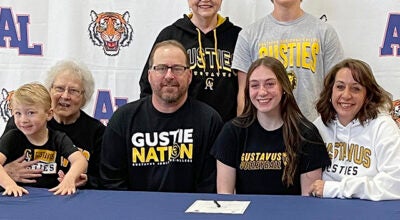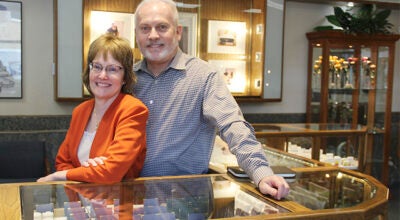University of Minnesota helping to predict climate change
Published 9:31 am Monday, November 1, 2021
|
Getting your Trinity Audio player ready...
|
MINNEAPOLIS — The University of Minnesota is participating in a new $25 million project that will reduce uncertainties in climate change projections using artificial intelligence (AI) technology.
More accurate climate change projections may help policymakers and scientists create concrete steps to mitigate the impacts of the changing climate for the future. The Learning the Earth with AI and Physics (LEAP) center is a five-year project funded by the National Science Foundation (NSF). Columbia University is leading the research in collaboration with the University of Minnesota.
The center is aiming to develop projection models through the use of new technology that differs from traditional modeling techniques used in the past.
“There are uncertainties that are inherent in these (traditional climate change) models,” said Vipin Kumar, University researcher and professor in the Department of Computer Science and Engineering. “If the center succeeds, it will be able to reduce uncertainties in our projections.”
Increasingly volatile weather patterns around the world have accelerated in recent years, resulting in devastating consequences that impact people’s lives currently and into the future, Kumar said. This acceleration is apparent in the wildfires in California and recent hurricanes in the Southeast, The Minnesota Daily reported.
Accurately projecting climate change will allow scientists to predict how to react to future weather patterns and natural disasters and outline possible preventive measures that can be undertaken.
Current climate change projections show sea levels may rise anywhere from half a meter to two meters in the coming decades. Sea level increases of half a meter could result in the need to construct more sea walls, while sea level increases of two meters could be financially devastating in some places.
Creating a more precise projection model would help narrow this gap and provide clearer guidance for mitigation measures, according to Kumar.
“Providing society a good estimate of what is the cost of action versus inaction will hopefully get the policymakers in action,” Kumar said.
The LEAP center is one of six NSF-funded centers that support complex research and education projects around the country. LEAP is specifically focused on providing more precise climate projections in order to achieve immediate societal impact, according to a statement from the NSF emailed to the Minnesota Daily.
Researchers and educators from three other institutions -– New York University, the University of California-Irvine and the University of Montreal –– are also involved in LEAP, according to the NSF.
LEAP is different from other climate modeling centers because it explores a new generation of climate modeling technology. This new technology combines the advantages of two modeling techniques frequently used to make predictions.
One technique models the physical processes of climate change, such as the warming of global temperatures, onto a computer. One common use of this model is to predict weather forecasts.
Another traditional technique is machine-learning, which compiles large amounts of data to make predictions. Amazon uses this to recommend new products to users based on past purchases.
While there are advantages to these techniques, they have their limitations, Kumar said.
Physics-based technologies cannot provide all of the details necessary to make extremely precise predictions, while machine-learning does not apply scientific knowledge and cannot draw conclusions from hypothetical data.
The center is developing a new technology that combines advantages of the traditional techniques, allowing for precise predictions with limited data.
“What we are planning to do in this project is a set of techniques that can combine the benefits of both of these (technologies),” Kumar said.
Applying machine learning to climate science has gained momentum in the last five years, Kumar said.
“We’ve seen (the new techniques) to be very successful, much more successful than the traditional scientific techniques and pure machine-learning techniques,” Kumar said.
Kumar said this center and research on new climate modeling technologies is an important step toward ensuring the safe future of society and humankind.
“If you want our way of living to be there 100 years from now, we need to solve this problem (climate change),” Kumar said. “It’s clear that if we keep doing things the way we’re doing and not worry about it, human kind will not exist far into the future.”



